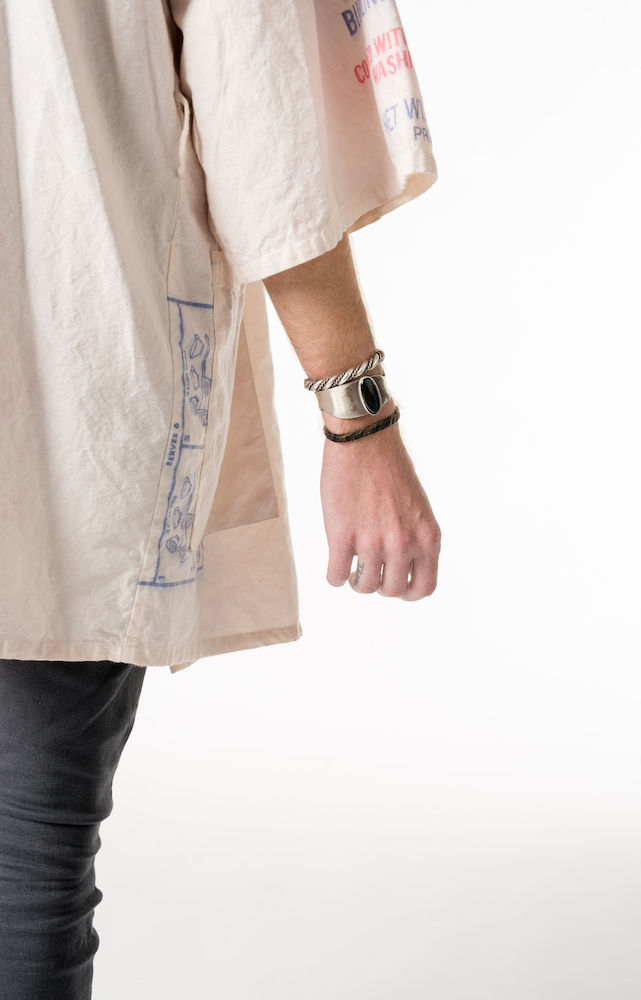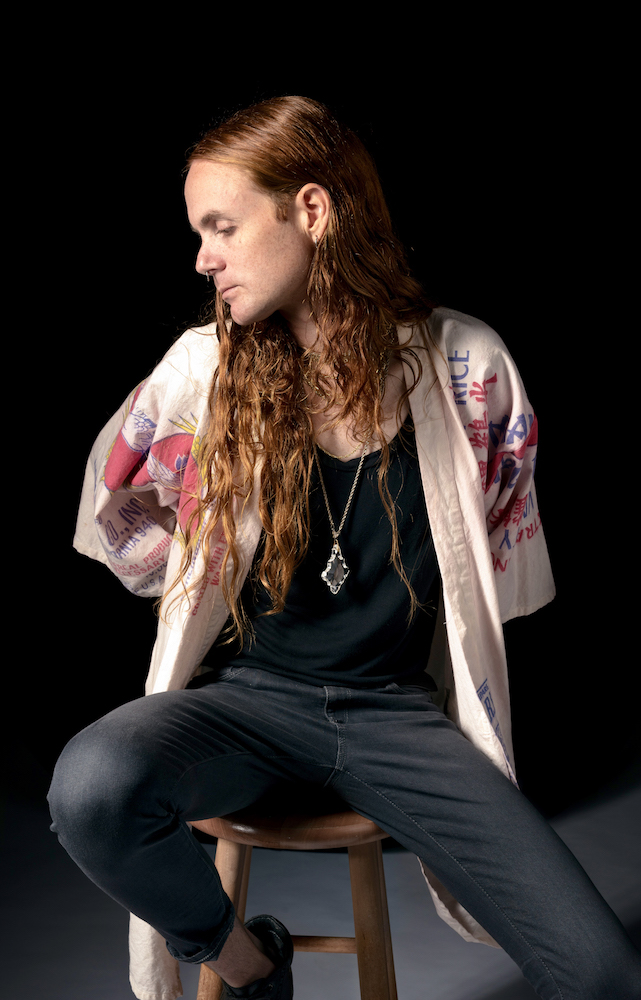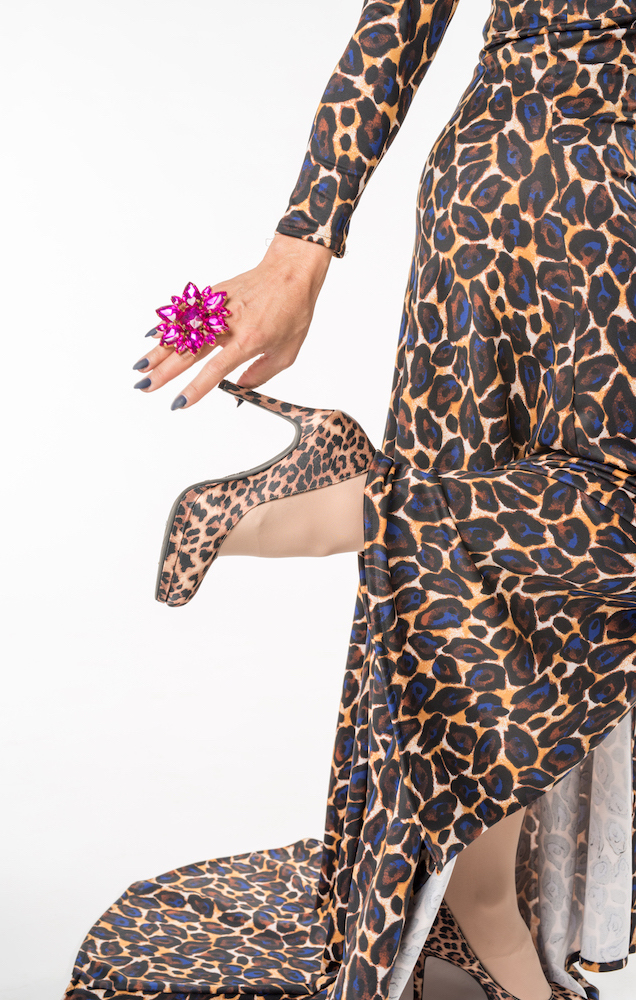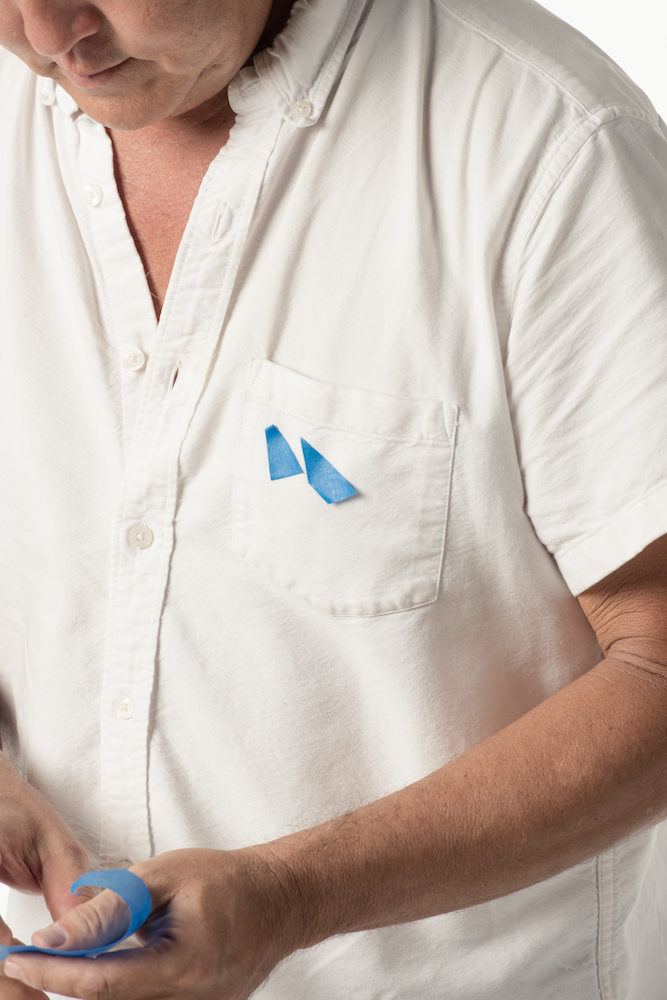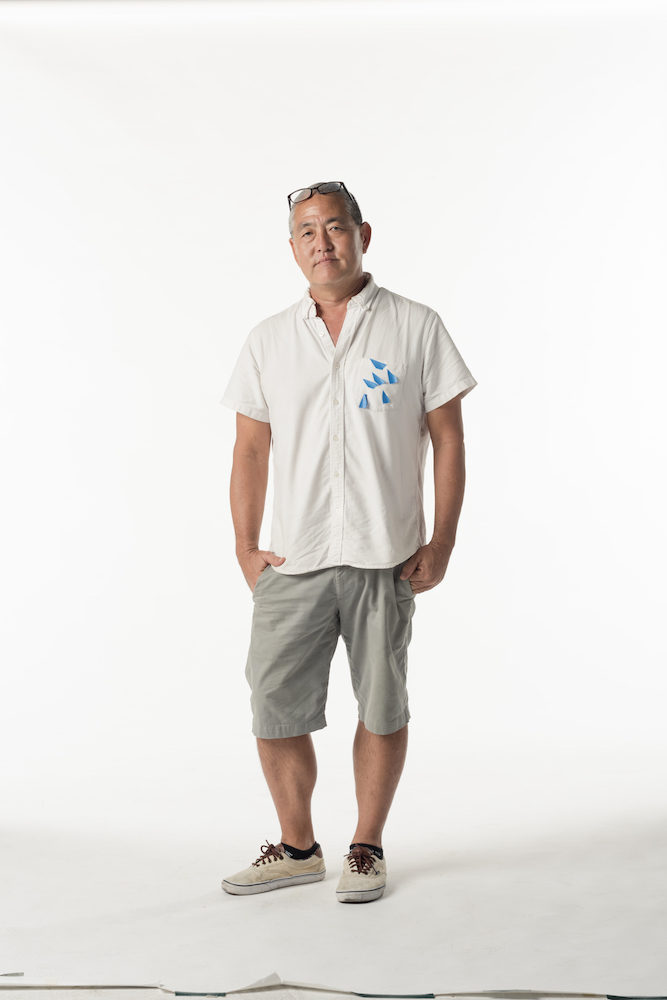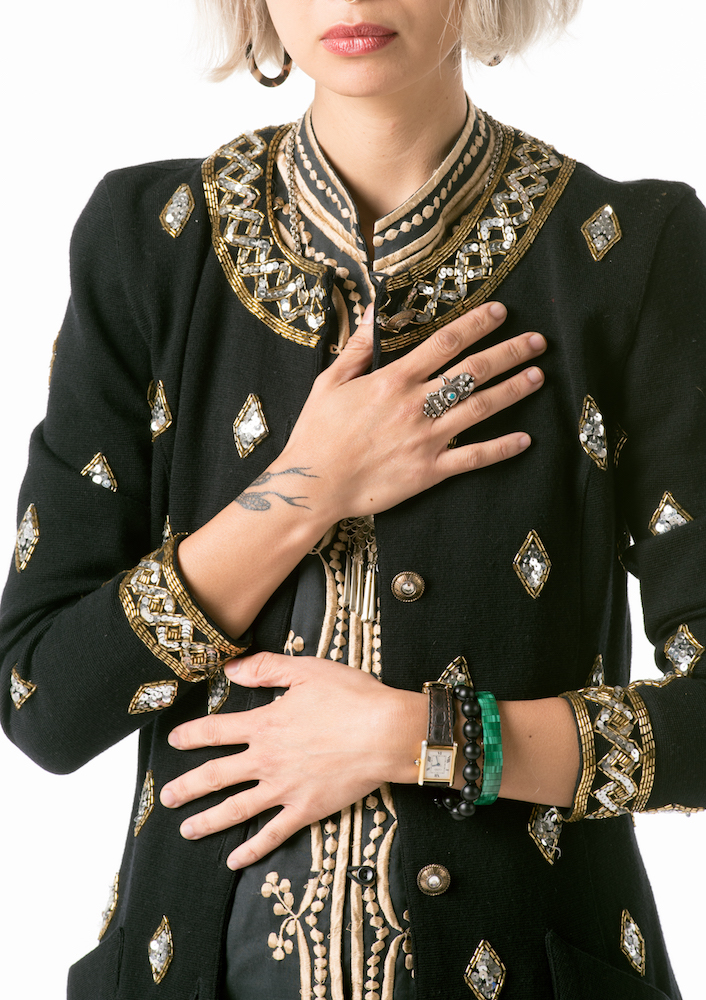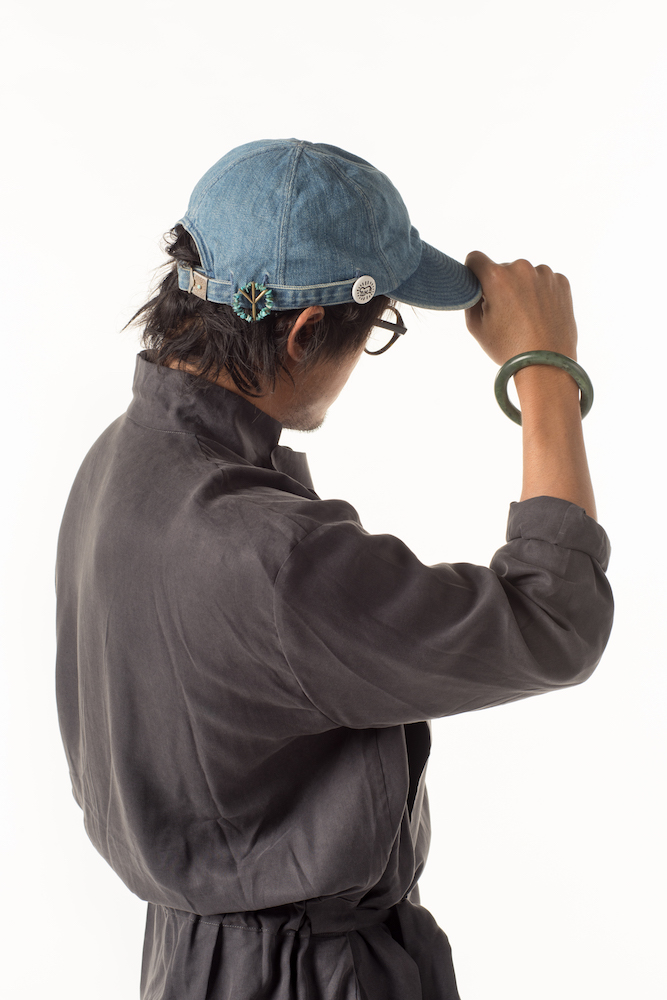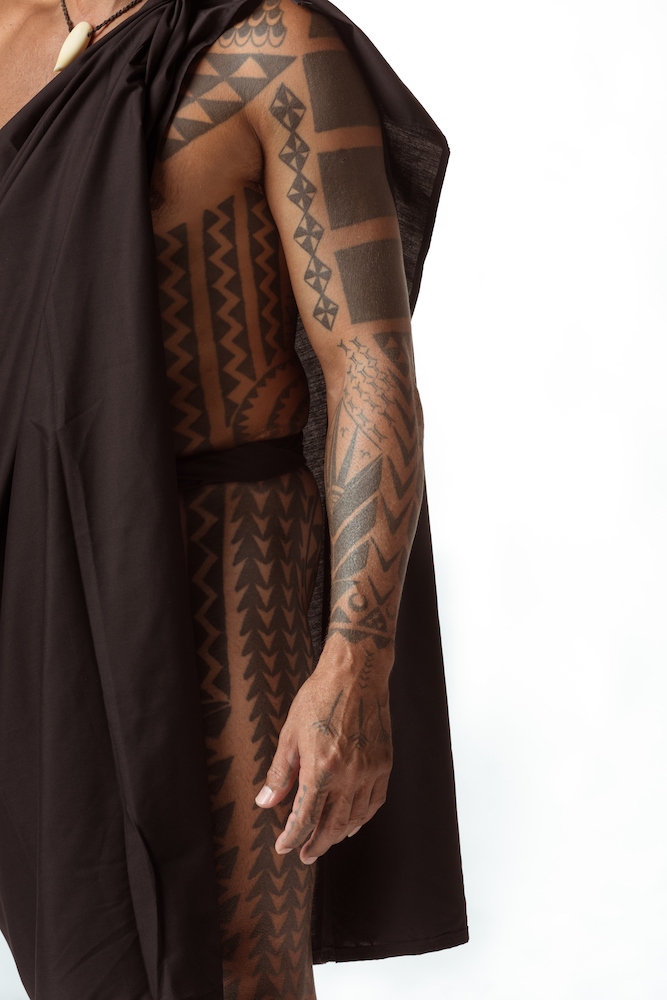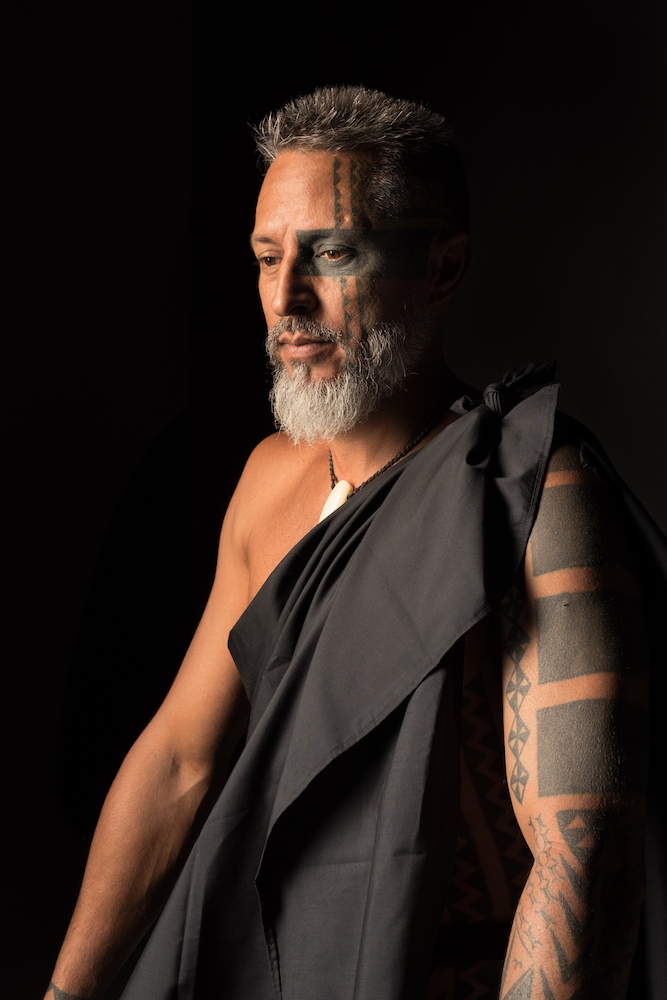Images by Chris Rohrer
Throughout history, humans have used clothing to signal power and prestige. In Hawai‘i, items like nā hulu ali‘i, or royal featherwork, functioned as more than adornment. They signaled status, genealogy, and a right to rule. Take, for example, the kā‘ei, or feathered cordon, that belonged to Līloa, a legendary ali‘i of Hawai‘i Island. It measured just under three meters in length and was generously covered on both sides with crimson and gold i‘iwi feathers—an undertaking that necessitated that thousands of individual feathers be carefully plucked from the necks and wings of birds and sewn to the garment’s fabric. Bordering the ends were yellow feathers from the prized and elusive o‘o bird. Along its cross section at the bottom edge, arranged in neat little rows, were human teeth. This arrangement of feathers and teeth was a show of power. Only the elite could don such plumage. The teeth contained the mana of ancestors and fallen warriors.
Today, researchers have found a psychological function to how we dress. Referred to as enclothed cognition, their theory is that clothing can affect how we think and behave.
“It’s about signaling a meaning to those around you and to yourself,” says Joni Sasaki, an assistant professor of psychology at the University of Hawai‘i at Mānoa. “Clothes are something that people really find deeply meaningful in terms of what it says about them,” Sasaki says. “Not just as individuals but also who they are in connection to the community around them.”
In the following portraits, we gathered members of Honolulu’s community to explore which items of clothing are their most empowering.
Bradley Rhea
Owner, Barrio Vintage
→ Clothed in: 1970s rice bag kimono
“I am always looking for the most original pieces to add to my closet—items that played an important role in very specific moments in history. Most of my favorite pieces have been personalized by someone long ago, and this kimono is an incredible representation of this. It’s recycled from rice bags in the ’70s, a trend somewhat prolific during the time. Though you can find wonderfully done reproductions, there’s something about donning the original that is incredibly insurmountable.”
Cocoa Chandelier
Entertainer
→ Clothed in: On-stage persona
“The idea of Cocoa Chandelier is empowering in itself: She is bold, courageous, cheeky, and camp. Being a role model is not something I aspired to be, but when you are out there living your truth, people look up to you just for being yourself. My mana comes from the people I surround myself with, and they have helped cultivate who Cocoa Chandelier is today.”
John Koga
Artist
→ Clothed in: Everyday work attire
“When I worked as an art installer at Spalding House, I used to wear the same outfit just because it’s the easiest to work in. Over time, it’s turned into something that’s recognizable. I didn’t consciously think about branding myself, but it’s just kind of turned into something that people associate me with.”
Ara Laylo
Creative director, NMG Network
→ Clothed in: Vintage Jacket
“I found this jacket at a flea market. The vendor was selling her mother’s vintage jacket for basically nothing. There’s something about finding value in things that others don’t.”
Summer Chong
Dermatologist
→ Clothed in: Doctor’s coat
“The first time that I put on this coat after receiving my PhD, I felt proud, accomplished, and honored. Wearing my white coat does empower me. For me, it stands for professionalism and reminds me of my commitment to my patients and the community.”
Brian Lam
Founder, The Wirecutter
→ Clothed in: Jade bracelet
“My father gifted these to me and my brothers. I chose the one with the dark green tint and giant chip, and my father said that’s the damaged one with immature color. I guess it was meant to be! I like feeling the gravity of it sitting on my wrist, and I like to imagine it bringing me the tiniest bit closer to my ancestors.”
Keli‘iokalani Mākua
Traditional tattooist, Ka Pā ‘O Hūnōhūnōholani
→ Clothed in: Kīhei and kākau uhi (tattoos)
“I got into kākau uhi while dancing hula for my cousin Keone Nunes. Elders passed information to him in his younger years on the priestly practice. I would assist him and became his apprentice. My sixth-generation grandfather was the last tattooist in my direct lineage—I’m following in my ancestors’ path. The patterns I wear are some of the same they wore. We mark our bodies to strengthen them, and to show who and where we are from. My ancestors will recognize me after I pass and guide me along the long red path of Kāne because I wear their markings.”


